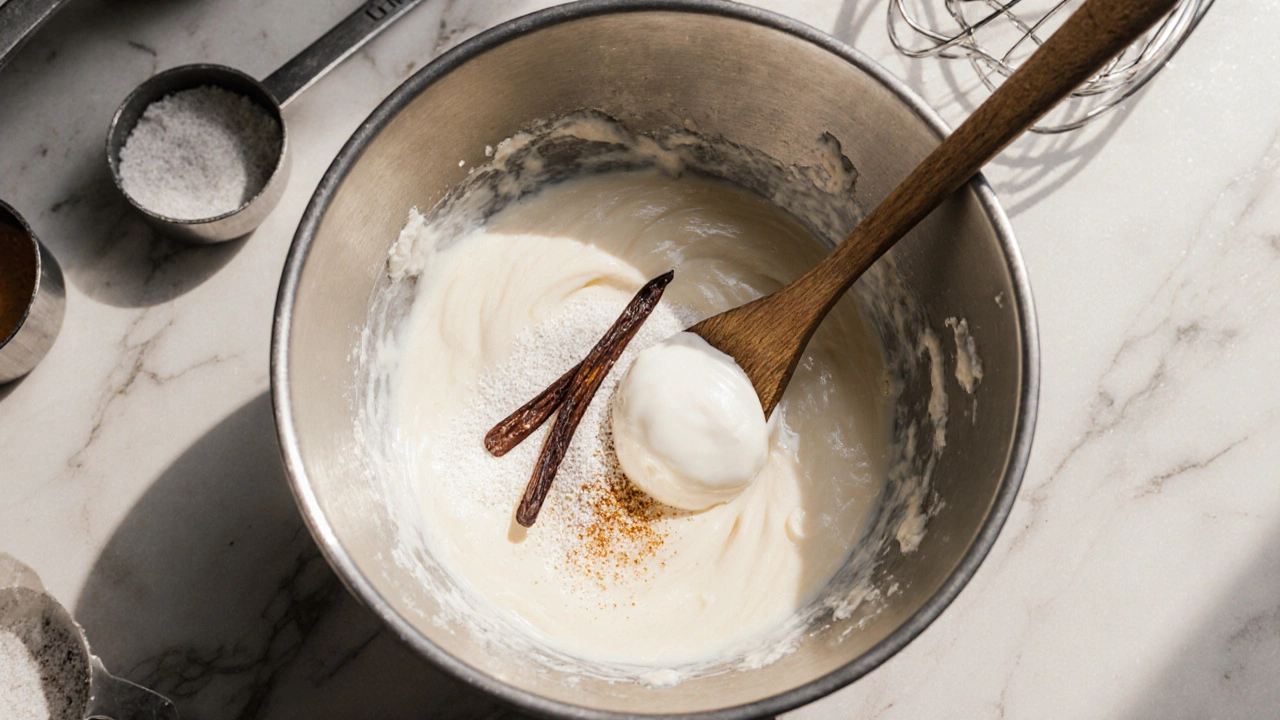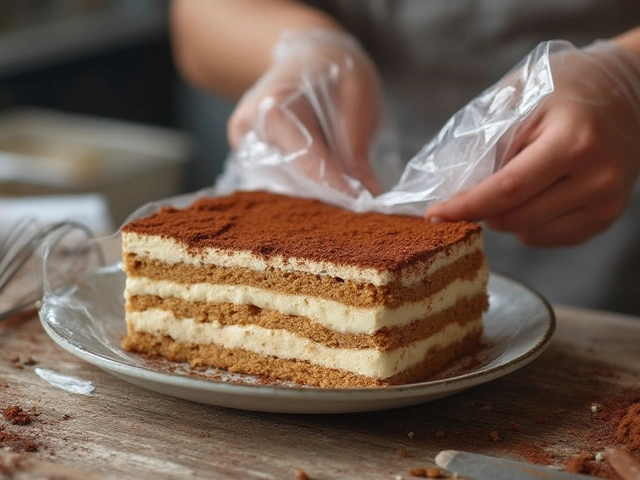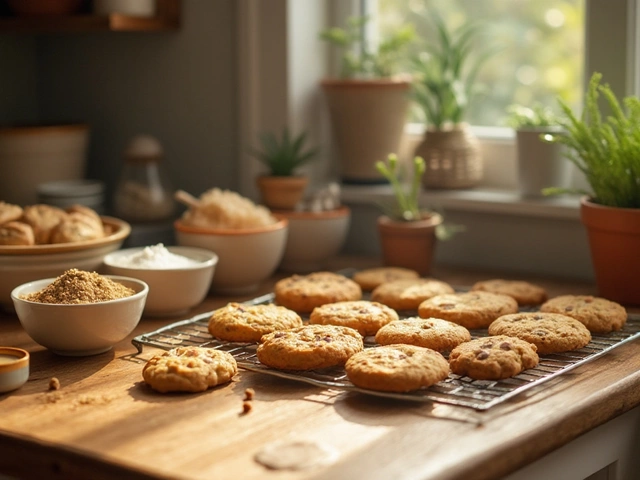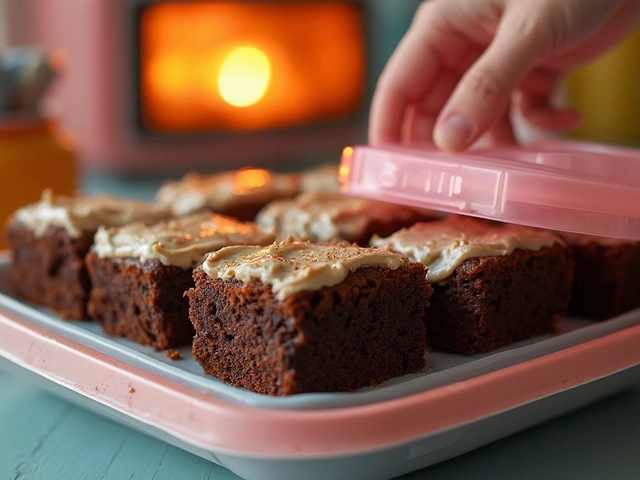Dairy Substitutes: The Sweet Spot Between Flavor and Freedom
When working with dairy substitutes, any ingredient that mimics the taste, texture, or functional properties of milk, butter, cheese, or eggs without using animal‑derived dairy. Also known as non‑dairy alternatives, dairy substitutes let you keep desserts creamy, sauces silky, and baked goods fluffy while catering to lactose intolerance, vegan lifestyles, or simple curiosity. One popular branch is plant‑based milk, liquids made from nuts, seeds, grains or legumes that replace cow’s milk in drinks, batters, and sauces. Another essential player is vegan butter, a solid fat blend of oils, emulsifiers, and sometimes cultured flavors that swaps for dairy butter in spreading or baking. For cheese cravings, nut cheese, a spread or firm cheese‑like product made from soaked nuts, nutritional yeast and cultures, mimics the melt and tang of traditional cheese. Finally, egg replacer, a mixture of starches, leavening agents or pureed fruit that stands in for eggs in baking and binding. Together they form a toolkit that lets you bake, cook, and decorate without a single dairy drop.
Why reach for dairy substitutes? First, they reduce the environmental footprint of your kitchen – plant‑based milks need far less water and land than dairy farms. Second, they open doors to new flavors: almond milk adds a nutty whisper, while oat milk brings a buttery sweetness that can’t be ignored in coffee or oatmeal. Third, they solve practical problems: lactose‑intolerant friends can finally enjoy a slice of cheesecake, and vegans can indulge in a buttery croissant without compromise. Each substitute brings its own functional profile. For instance, oat milk’s higher protein content helps it foam like dairy milk for latte art, whereas rice milk’s thin consistency works well in light sauces but may need thickening agents for custards.
How to Choose the Right Substitute for Your Recipe
Picking a dairy substitute isn’t a one‑size‑fits‑all decision. Look at the role dairy plays in your dish. If you need creaminess and body, plant‑based milk with higher fat, such as cashew or coconut milk, will give a richer mouthfeel than skim‑type soy milk. When a recipe calls for solid fat – think pie crusts or flaky biscuits – veg‑butter with a 80/20 oil‑water ratio replicates butter’s lamination properties, delivering those coveted layers. For dishes that need melt and stretch, like pizza or lasagna, nut cheese blended with agar or tapioca starch provides a gooey pull without the dairy. Egg replacers vary: flaxseed gel works well as a binder in brownies, while commercial powder mixes excel in rising cakes because they contain leavening. Understanding these nuances keeps your results consistent and your textures on point.
Another factor is flavor compatibility. Coconut milk carries a distinct coconut aroma, perfect for tropical desserts but jarring in a classic vanilla custard. Soy milk is neutral, making it a versatile all‑rounder for sauces, soups, and smoothies. When you replace butter with vegan butter, watch for added salt – many spreads are already seasoned, so you might need to cut back on added salt in the recipe. Nut cheeses often have a nutty backbone; adding a splash of lemon juice or a pinch of miso can boost the umami that dairy cheese normally supplies. And don’t forget temperature: most vegan butters melt at a lower temperature than dairy butter, so keep an eye on heat to avoid over‑spreading.
Storage and shelf life also matter. Plant‑based milks opened from the carton usually last 7‑10 days in the fridge, while homemade nut milks may need to be used within 3‑4 days. Vegan butter stays solid at room temperature for weeks, but for best spreadability keep it chilled. Nut cheeses can be kept in an airtight container for up to two weeks, though stronger flavors develop over time – a good thing for cheese boards. Egg replacer powders have a long shelf life, but moisture‑based gels should be used within a week to avoid spoilage.
Health considerations are another reason people switch. Many dairy substitutes are fortified with calcium, vitamin D, and B12, matching the nutrient profile of cow’s milk. However, watch for added sugars in flavored plant milks – the unsweetened versions keep calories low and let you control sweetness. Vegan butter often contains saturated fats from coconut oil; if you watch heart health, choose blends that rely on olive or avocado oil. Nut cheeses deliver healthy fats and protein, but they’re calorie‑dense, so portion control matters. Egg replacers based on starches add carbs; look for those enriched with protein if you need a more balanced macro profile.
Finally, experiment is the best teacher. Start with a simple swap – replace half the dairy milk in a pancake batter with oat milk and note the change in fluffiness. Move on to a full dairy‑free bake, using veg‑butter for the crumb and a flaxseed egg replacer for binding. Try a vegan cheese sauce on mac and cheese, adjusting seasoning until the flavor mimics the dairy version. As you get comfortable, you’ll discover that dairy substitutes not only duplicate traditional results but also unlock new taste dimensions that can elevate your cooking.
Ready to dive deeper? Below you’ll find a curated selection of articles that break down the history of mascarpone, the truth about vegan jelly sweets, the science behind smooth fudge, and many more topics that intersect with dairy‑free living. Each piece offers practical tips, ingredient guides, and insights you can apply right away, whether you’re a seasoned vegan baker or just curious about cutting dairy from your favorite treats.

Why Add Sour Cream to Cheesecake? Benefits, Tips, and Substitutes
Explore why sour cream is added to cheesecake, how it improves texture and flavor, the right amounts, substitutes, tips, and FAQs for perfect results.
View More




